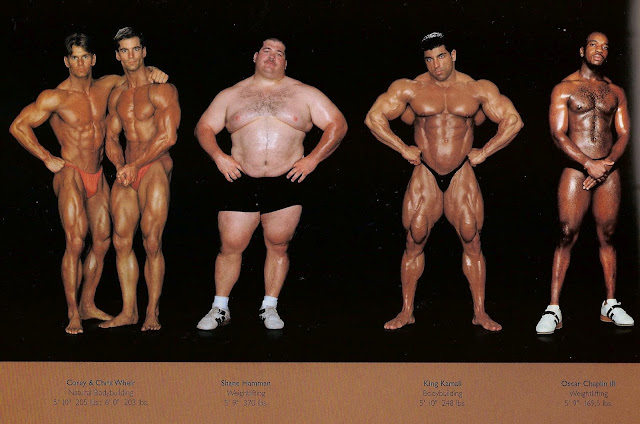The Men on the Street by August Sander
Scot Schuman of The Sartorialist blog is noted today for singling out extraordinary men and women on the street with the aim of showing off their fashion creativity. Almost a century ago, someone else was doing something similar, although he took pictures of men on the streets, soldiers on rural foot paths and children on farm roads, all in order to document a whole generation on the photographic medium. His name is August Sander and he is widely acknowledged as one of Germany's finest portrait photographers of the early 20th century.
August Sander lived when mobile photography was still in its infancy. He started as a photographer's assistant at the turn of the 20th century and soon learned enough to set up his own studio first in Linz, Austria then in Cologne, Germany.
His greatest contribution was his collection of portraits of the people living in and around Germany at that time. It was to be called the People of the Twentieth Century and he conceived of this idea around the 1920s, although he was only able to publish a fraction of his work from this catalogue during his lifetime (fortunately, a recent publication of the same name was recently made available to the public).
Unlike The Sartorialist however, Sander's work did not just concentrate on the fashion of the time. Rather, he sought to record the characteristics that were universal among all people, across different professions and classes.
He developed a system of cataloguing his photographs by dividing them into seven groups, namely: the Farmer, the Skilled Tradesman, the Woman, Classes and Professions, the Artists, the City, and the Marginal People.
In hindsight, Sander's work in cataloguing the different peoples of Germany is invaluable as it would have provided modern readers crucial information pertaining to that time. The fact that he included the elderly, the homeless and minority groups did not sit well with the Nazis.
In 1929, his book entitled the Face of Our Time was banned because it not only showed marginalized individuals, it indicated that they were on equal footing with the Aryan people by their presentation alone. Many of his photographic plates were also destroyed many years later as a consequence.
By the middle of the 1940s, Sanders catalogue included over 40,000 photographs. Just like Irving Penn's Small Trades project, Sanders work provides a beautiful and somewhat romantic view into the ordinary lives of the rich and poor, the working class and the privileged. The fact that he didn't overlook the overly young or old gives the collection a special distinction over any other.
Indeed, his typologies cover almost all classes and professions of the early half of the last century, enabling readers an almost complete document of life in Germany at the time.
There are numerous publications on August Sander's works. August Sander: Face Our Time is a good start and makes for a nice pocketbook. August Sander: Seeing, Observing, Thinking, One Hundred Masterprints collects many of his prints as the name suggests. If you want the entire collection, spring for the seven-volume August Sander: People of the 20th Century.








I love the kind of photos; thanks for sharing
ReplyDeleteThe kids in the fourth photo, adorable~
ReplyDeleteIt kind of depresses me to know that some of his work was destroyed. Can you just imagine the effort down the drain? Terrible..
ReplyDeleteThat's pretty awesome, a real pre-war look at Germany without all the Nazi skewing, I'm glad he stood up for equality and pictured everyone on the same level.
ReplyDeleteThese are fantastic photos. Essentials in remembering history.
ReplyDeleteI love black and white portraits! These ones are amazing! :)
ReplyDeleteGood photos, stern people.
ReplyDeleteCool stuff, these aren't really my style though
ReplyDeleteSo what do you think? Are these "staged" or not? My professor said that the picture with the three gentlemen was completely staged. They didn't went to a party, it was all set up ;)
ReplyDeletegreat stuff
ReplyDeleteWow.. Those area actually looks really cool!
ReplyDeletenice photos!
ReplyDeleteAmazing stylish photos!
ReplyDeletesomne really intersting shots!
ReplyDeletethey look old.
ReplyDeleteI love seeing pictures from other times and places. I'm liking what I see of his work.
ReplyDeletegreat photos
ReplyDeleteinteresting
ReplyDeletethese pictures are so cliche that i love how well they are taken.
ReplyDeleteThis is great!
ReplyDeletephotography/art, the great equalizer. No wonder Nazi goons couldn't handle it.
ReplyDeletefantastic set. the one of the cook is brilliant!
ReplyDelete40,000 photo catalog?!? Mama mia!
ReplyDeletenice pics. we should start wearing hats
ReplyDeleteIntense pics! How come at the time no one would show teeth when they smiled?
ReplyDeletelast photograph is great!
ReplyDeleteThat cook is fantastic!
ReplyDeleteThese portraits are amazing, a style sadly lost to modern photography. I'm so glad to see so many great posts on my first day back being able to comment in a while.
ReplyDeletethat dude with the pot is a fucking pimp
ReplyDeleteGreat look. Wish we could go back and look classy.
ReplyDelete